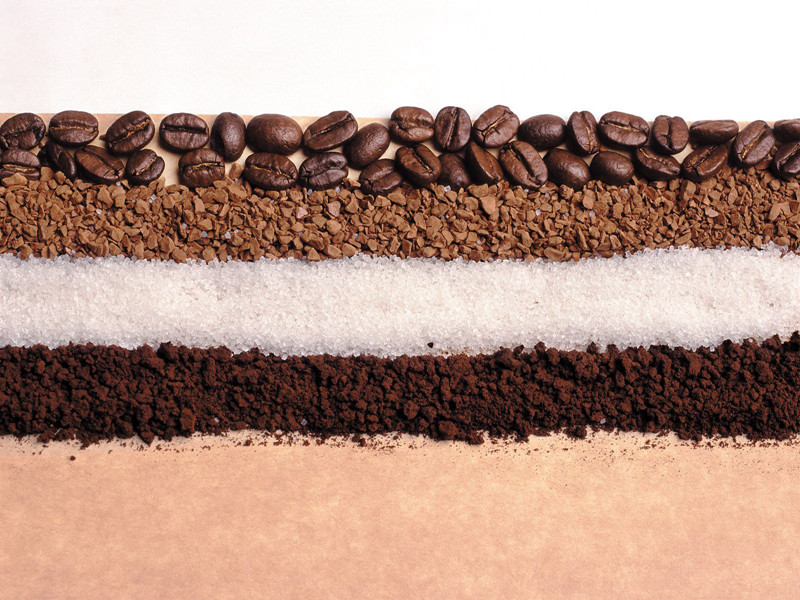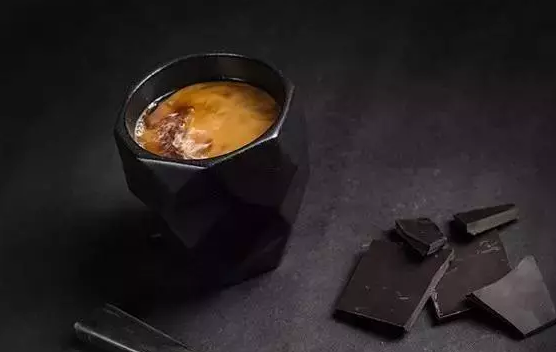Italian coffee blending experience, drip coffee blending, decaf coffee how to mix?
Italian coffee blending experience, drip coffee blending, decaf coffee
The blending of dripping coffee: Viennese coffee
The most helpless blend of coffee is the mix of "Melange". The beans in this blended coffee are roasted to different degrees, so each kind of coffee has to be roasted independently. Especially if you want both the carbon in deep baking and the sour taste in lightly roasted Kenyan or Central American coffee beans.

The following coffees are blended with deep-roasted flavor, good taste, and proper acidity.
40% of the "city-wide" roasted Colombian Tuluni coffee-for better taste
(it can also be other Colombian coffee, Nicaraguan La Illusion, or Brazilian Monte Carmelo coffee)
30% French roasted Mexican Tres Flechas coffee-with a clear, charred taste
(it can also be other Mexican coffee)
30% of city-baked Kenyan Estate coffee-forms a bright sour taste
(it can also be refreshing Costa Rican coffee, or other Central American coffee)
If you want to make a unique "Viennese coffee" with good taste, sweet and bitter taste, but still sour, but not charred, you can try the following mix
60% of Colombian coffee baked by "whole city"
40% of city-baked Kenyan coffee or bright Central American coffee
Using balanced, moderately sour, good-tasting Central American coffee, the same kind of coffee with different roasting degrees can be blended together.
60% city-wide baked Colombian Tuluni, or Nicaraguan La Illusion coffee, etc.
40% of the same kind of coffee baked in the city (roasted until the end of the explosion)
The exhibition we learned is a good place to taste all kinds of common coffee combinations, and the major bakeries bring what they think is the best coffee mix here for everyone to taste. At the 1998 exhibition of the American Special Coffee Association, many "Viennese coffees" were mixed with 30%, 40% Kenyan coffee to highlight its acidic taste.
This blend improves the sour taste of coffee and tastes much better than Kenyan coffee.
Blending of drip filter coffee: mocha-Java coffee
People can't help thinking that blended coffee is as old as homemade coffee. A thick, average-quality "Java coffee" combined with a moderate, floral, more acidic "mocha", which was the only two kinds of coffee at the time. Is it just a habit to mix these two kinds of coffee together? Or is it because this combination can improve their taste? In any case, the combination of these two kinds of coffee can make coffee drinks with richer export flavor than either of them.
Even with the simple coffee roasting and making tools at that time, it was incredible to produce such a rich flavor of "mocha-Java" blended coffee. It is not difficult to make a very good coffee from two very good coffees. The purpose of mixing coffee commercially is to make coffee drinks with quite good export taste from several kinds of coffee that are not of very good quality.
The original mocha-Java coffee is made of Yemeni mocha coffee and Indonesian Java coffee. But you can usually use any kind of coffee from Indonesia and mix it with any kind of coffee from Ethiopia or Yemen. The usual blending ratio is one-to-one; or there are slightly more coffee beans in Indonesia, such as 55:45.
The very good result we have spelled out is a combination of Hirazi or Dhamari coffee beans from Yemen (or "Hara" beans from Ethiopia) and Batak Mandheling (washed beans) or Sulawesi Toraja (washed beans) from Sumatra.
Italian coffee mix
Decaffeinated Coffee
If you need decaf espresso, prepare some water-processed Brazilian decaf beans. Use 50% of this coffee bean, plus some other coffee beans with different flavors. If you want coffee that is almost completely decaffeinated, you can choose one of the following combinations:
50% of Brazilian water-treated low-caffeine coffee beans and 50% of water-treated Sumatran low-caffeine coffee beans
50% of Brazilian low-caffeine beans, 25% of Mexican Esmeralda low-caffeine beans, and 25% of Sumatra low-caffeine beans treated by water processing.
We also have two kinds of mixed Italian coffee beans for customers to bake by themselves. Ethiopia's low-caffeine beans are also suitable for making espresso. Try a blend of 50% water-treated Sumatran low-caffeine beans and 50% Ethiopian low-caffeinated beans.

Important Notice :
前街咖啡 FrontStreet Coffee has moved to new addredd:
FrontStreet Coffee Address: 315,Donghua East Road,GuangZhou
Tel:020 38364473
- Prev

The basic knowledge of coffee blending, is it baking before blending, or blending before baking?
For professional baristas, please follow the coffee workshop (Wechat official account cafe_style). People need to piece together coffee from different places for several different purposes. The ideal goal, of course, is to piece together a coffee that tastes better than any of them. But generally speaking, Arabica coffee from a single place of origin is enough to make coffee that tastes good for export; fragrant
- Next

Coffee is just the consumption of life! It's not coffee with no future, it's boutique coffee with no future.
Professional barista communication please follow the coffee workshop (Wechat official account cafe_style) in 1993, when I went to the Muzhang International Food and Beverage equipment and Food Exhibition in Tokyo, Japan, I saw the development of Japan's own baking industry at that time. I was very impressed by Bonmac's idea of automating the process of baking (baking) in the exhibition. I bought it at Yonghan Bookstore when I returned to Taiwan.
Related
- Detailed explanation of Jadeite planting Land in Panamanian Jadeite Manor introduction to the grading system of Jadeite competitive bidding, Red bid, Green bid and Rose Summer
- Story of Coffee planting in Brenka region of Costa Rica Stonehenge Manor anaerobic heavy honey treatment of flavor mouth
- What's on the barrel of Blue Mountain Coffee beans?
- Can American coffee also pull flowers? How to use hot American style to pull out a good-looking pattern?
- Can you make a cold extract with coffee beans? What is the right proportion for cold-extracted coffee formula?
- Indonesian PWN Gold Mandrine Coffee Origin Features Flavor How to Chong? Mandolin coffee is American.
- A brief introduction to the flavor characteristics of Brazilian yellow bourbon coffee beans
- What is the effect of different water quality on the flavor of cold-extracted coffee? What kind of water is best for brewing coffee?
- Why do you think of Rose Summer whenever you mention Panamanian coffee?
- Introduction to the characteristics of authentic blue mountain coffee bean producing areas? What is the CIB Coffee Authority in Jamaica?

